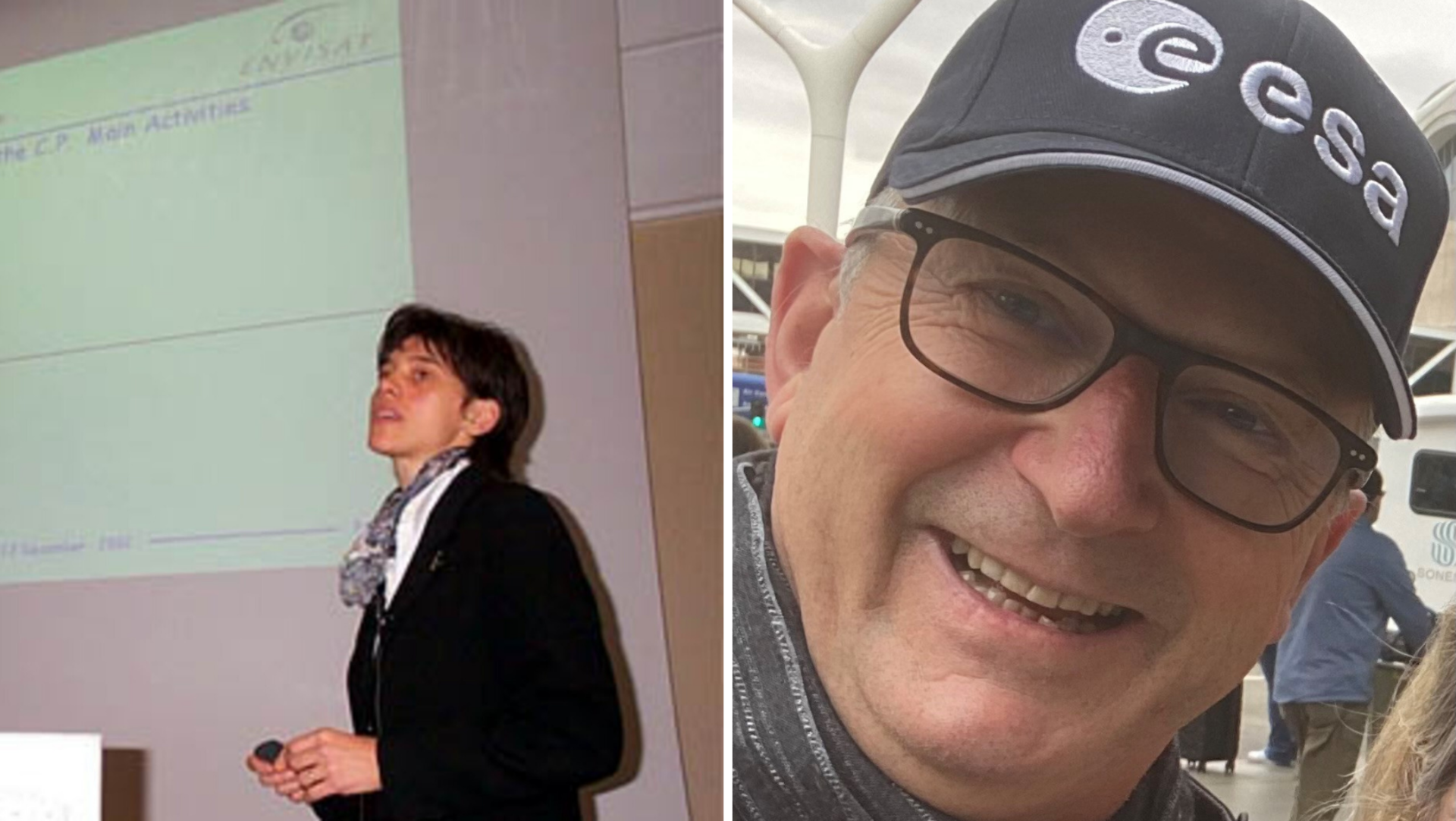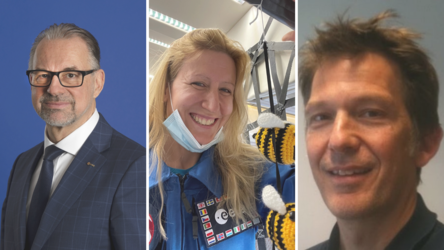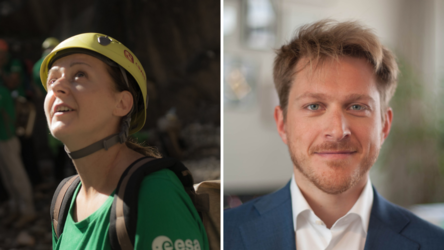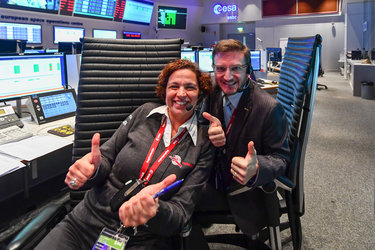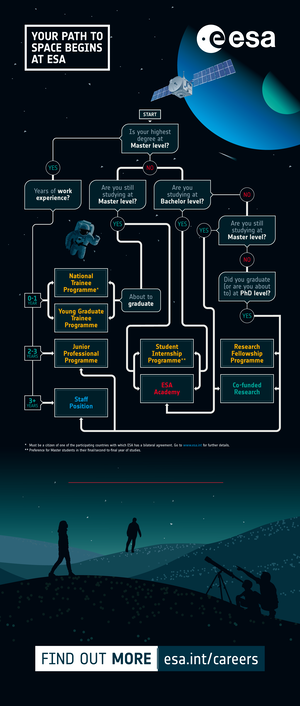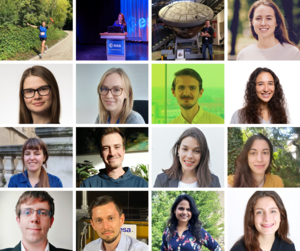Part 3: YGTs – Where are they now?
Ever wondered where ESA’s former Young Graduate Trainees are today? For third and final part of the series ‘YGTs – Where are they now?’ we interviewed two more YGT alumni, one of whom was among ESA’s very first cohort of YGTs, to learn about their career paths leading up to, during and after their YGT experience. Read on to find out where alumni of the YGT Programme are today!
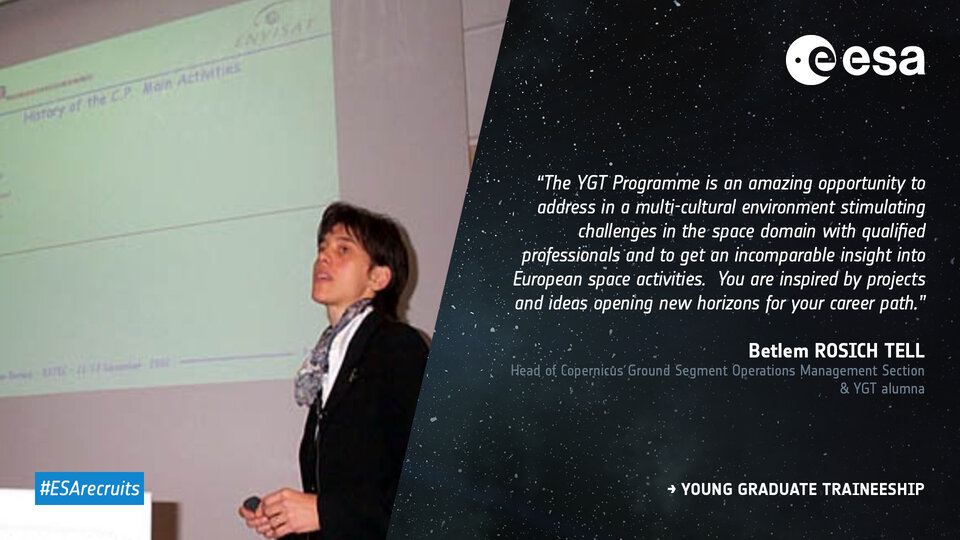
Current main project(s): Copernicus Operations Management
Years as a YGT: July 1995-April 1997
What was your background/experience before becoming a YGT?
I graduated as Telecommunications Engineer at the Escola Tècnica Superior d’ Enginyers de Telecomunicacions de Barcelona, Universitat Politècnica of Barcelona, specialising in Synthetic Aperture Radar (SAR).
I started my professional experience as a research assistant on SAR data processing at the European Union Satellite Centre (SatCen) before joining ESA as a Young Graduate Trainee in July 1995.
Why did you apply to become a YGT?
I would be lying if I said that joining ESA had been a lifelong dream. The truth is that I hardly knew about ESA when I was in my early twenties. My dreams were about big challenges to change the world and getting a chance to contribute to them, I just didn’t know where or how – until I met by coincidence someone who lived nearby who was a YGT at ESTEC.
I was seduced by the international environment and the European cooperative spirit, as well as the ambition and far-reaching potential of space projects. I knew it was definitely a place worth discovering and I posted my application letter, crossing my fingers that I would be called for a YGT interview at ESTEC.
The invitation letter arrived but, surprisingly and unexpectedly, for an interview at ESRIN, in Italy. This was not exactly what I had hoped for but today, I am very glad it was ESRIN.
What did you work on as a YGT?
I joined ESRIN in July 1995, shortly after ERS-2 was launched, and I worked with a small team on the processing and calibration of the ERS-1/2 SAR data.
These were the early times of the SAR processing and, as part of this team, I was involved in the review of the SAR processing algorithms, the definition of the parameters that could be used to characterise the quality of the data, the implementation of the tools allowing to measure them and the definition of the methodology to perform the absolute data calibration using external reference measures.
Compared to nice-looking optical images, the SAR images were not very appealing for most people at that time, but there was so much information to be extracted from them that contributing to the processing was, for me, a very exciting job.
Where did your path lead to after your YGT experience?
At the end of my YGT period, I was proposed an ESA consultant contract to provide local support to several user groups in South America interested in integrating ERS SAR data into their applications. It was a fantastic opportunity to work in the field with users and help them to analyse the SAR images and extract information relevant for their own applications.
This led me to working for several months in Argentina and Bolivia and, for a shorter period, in Peru, Venezuela and Mexico.
On my return, I took an initial two-year contract at ESRIN to develop new applications with SAR data. One of the best experiences at that time was a collaboration with the Politecnico di Milano to validate the interferometric Permanent Scatterers technique for measuring millimetric ground motion, including the deployment of a corner reflector in the Rome area as a reference target.
From the applications area I moved to the area of instrument performance monitoring and data processing as responsible for the quality and calibration of ERS SAR and then ENVISAT ASAR products, in close contact with the user community and with the objective of ensuring that data made available to users was of the best possible quality.
When GMES (now Copernicus) became a reality, I was appointed project manager for the development of the Sentinel-1 payload data ground segment. We developed and validated the ground segment elements and deployed them around Europe, ready for the launch of the Sentinel-1A satellite in April 2014. When the first satellite data was downlinked to the Matera acquisition station a few days after the launch, we could see for the first time the whole system working.
Since 2018 I have been acting as Head of the Copernicus Ground Segment Operations Management Section, looking after the Sentinels’ operations. With about 50 million Sentinel products available for free download since the start of Sentinel-1A operations, about half a million users registered to access them and many operational services and applications in multiple domains relying on the availability of Sentinel data, Copernicus and its future evolution remains a challenging project.
What advice do you have for a future YGT applicant?
The YGT Programme offers the opportunity to work in an open multi-cultural environment at the top of innovation and technical expertise. It is an amazing opportunity to work with qualified professionals inside and outside ESA and to start building a wide network of professional relationships.
You have at ESA an incomparable insight into European space-related activities in all domains and the possibility to discover new projects and ideas that may inspire you and lead you to a career path you could not have imagined before.
What was the most valuable takeaway from the YGT Programme?
From a professional perspective I would say that one of the most valuable takeaways was realising how much a diverse team of skilled and motivated people could achieve. There are often multiple solutions to a given problem and learning the value of putting together completely different views to find the most suitable approach was a really valuable takeaway.
From a personal perspective, I took with me the tangible evidence of what European cooperation was able to achieve.
As a last question, we asked the current YGTs to send us questions for the YGT alumni to answer that they believed would be valuable for applicants to hear about. The question picked by Betlem is:
What are your thoughts on returning to ESA after gaining some industry experience?
At ESA you work very closely with industry, but the roles and objectives are different, as are the actual activities and processes behind them. Working in industry for some time after a YGT placement would offer a complementary view in terms of the management and implementation of a project, which would be of great value for both sides when returning to ESA.
More particularly, in the area of Earth Observation and especially in Copernicus operations, ESA is increasingly empowering industry to take the lead in the implementation of activities and in the delivery of operational services. Both large companies and small start-ups are currently offering great opportunities to innovate and contribute to top-level European solutions. Being a part of this challenge on the industry side for some time and then returning to ESA enriched by the experience would be a truly valuable professional experience.
One of the very first YGTs – Michael Rast
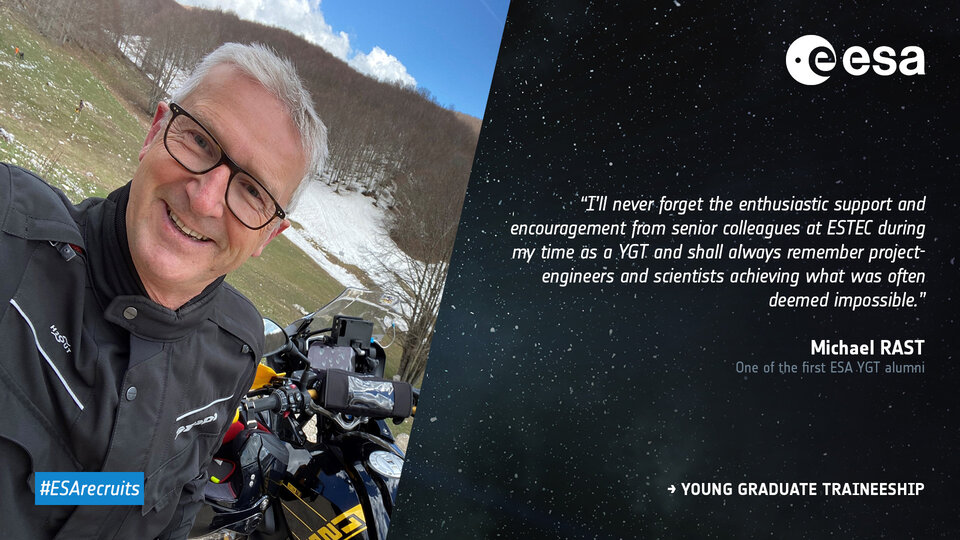
Years as a YGT: February 1985 to July 1986
What was your background/experience before becoming a YGT?
I did my Master’s degree in geology and geological remote sensing (a brand-new study course back then) and was a scientific assistant at the Institute for Photogrammetry and Remote Sensing at the Ludwig-Maximilians University (LMU) of Munich. I was (in 1983/84) actually working on a study for ESA on Radar remote sensing for land applications. This study had been awarded to LMU by ESOC (ESA's centre in Germany).
Why did you apply to become a YGT?
The head of our institute and my Master’s degree supervisor, Professor Dr. Johann Bodechtel, was an advisor to ESA when the first call for YGT applications back in 1984 landed on his desk. I took the opportunity to send in an application and was invited for an interview at ESTEC in the Netherlands in November 1984. I was the first YGT in the Directorate of Earth Observation and Microgravity and I guess one of the first ‘handful’ of YGTs at ESA.
What did you work on as a YGT?
I had the opportunity to work on one of the two “Announcement of Opportunity” payloads on ERS-1, namely the Precise Range And Range Rate Experiment (PRARE) and also the Laser Retroreflector for ERS-1 positioning. We still had a range of experiment-labs at ESTEC at the time and I had the chance to work hands-on with the hardware, which was most impressive.
What is your most memorable or challenging moment as a YGT?
Most memorable for me was being allowed to attend scientific advisory board meetings with the most famous scholars and scientists in this fairly young discipline ‘Earth observation remote sensing’. One of the biggest challenges was to find the best suited model for correcting the atmospheric influence on the observations of optical sensing candidate instruments for ERS-1. The Mathematics Department at ESTEC helped to procure an atmospheric transfer code (called Lowtran) from the US Airforce Geophysical Laboratories in the US and friends at DLR in Germany helped us to understand the early atmospheric correction modelling that was going on in Europe.
Above all, I’ll never forget the enthusiastic support and encouragement from senior colleagues at ESTEC at the time and shall always remember project engineers and scientists achieving what was often deemed impossible.
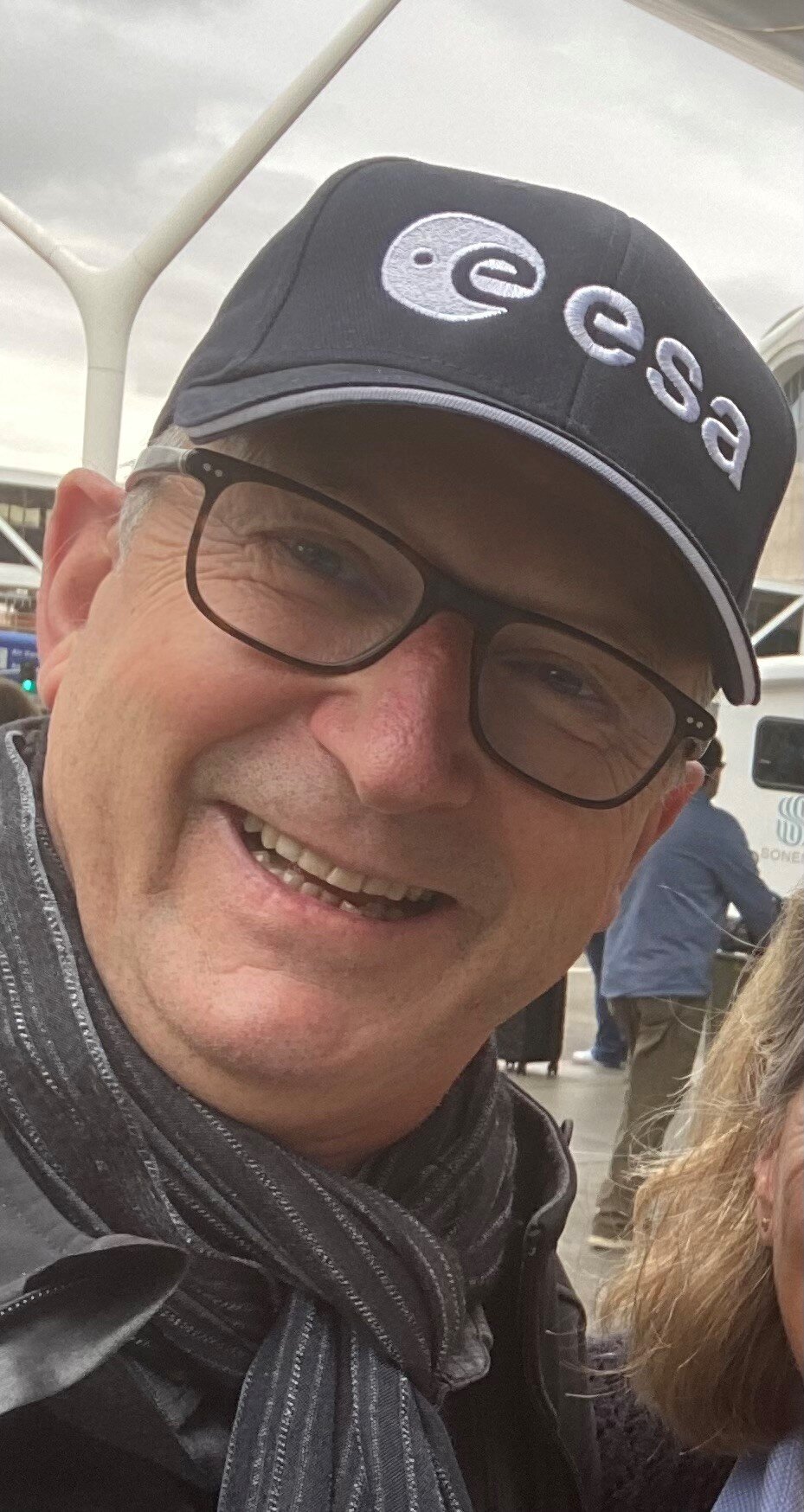
Where did your path lead to after your YGT experience?
My YGT period lead to job offers from industry and academia. Nevertheless, I decided to stay with the Agency and received an offer for a two-year contract, becoming one of the early team members in the Earth Observation Preparatory Programme (EOPP), which later led to the development of the Polar EO platforms and ultimately the development of Envisat. Subsequently I obtained a permanent contract in the Directorate for Earth Observation and was able, through an ESA Fellowship, to work at NASA JPL for a year and learn about Earth Observation Imaging Spectroscopy, at that time a very new technique in Earth observation, which would later become relevant for ESA’s Earth Observation Programme. Returning to ESTEC in 1990, I was able to complete my PhD on the subject, which was actually published by ESA.
Working as a Mission Scientist on one of the Envisat payloads (MERIS) in the newly founded Earth Sciences Division in 1993 was the next step. Then, from 1996, I got more and more involved in ESA’s Earth Explorer Programme. Working on the ESA Earth Observation Strategies and the mission requirements for Copernicus satellites followed. A secondment from ESTEC to the Secretariat of the Group on Earth Observations (GEO) in Geneva was offered to me by my director in 2006. On completion of this secondment in 2008, I became Head of the Programme Planning Office at ESRIN and then Head of the Science Strategy Office in 2011. In 2017, in my final ‘career lap’, I became Senior Advisor to the Director of Earth Observation Programmes – a major honour. In December 2021 I retired from ESA, concluding a 37-year Agency career. Over the years, I did indeed get job offers outside ESA, the most prominent probably to become a C-4 Professor at the University of Munich, which I declined in favour of staying at ESA. Still, with the permission of my director at ESA, I was able to obtain my honorary professorship at the University of Munich in 2011 and taught annual ESA courses at the university until my retirement.
In retrospect, I wouldn’t want to have done it any other way.
How did the YGT help you in your future career?
The YGT placement inspired me to stay in the field of Earth observations from space. It provided me with all the requisite tools, teamwork and appreciation for multicultural skills being among the most important.
What advice do you have for a future YGT applicant?
Try to acquire as many skills and absorb as much of the international spirit as you can: such an opportunity to be in this environment is unlikely to come around very often.
As a last question, we asked the current YGTs to send us questions for the YGT alumni to answer that they believed would be valuable for applicants to hear about. The question picked by Michael is:
What sort of jobs did you apply to after your YGT experience?
Firstly, I applied for head of the Land Surfaces Unit within the Earth Sciences Division at ESTEC (PhD was then compulsory), then the Head of the Programme Planning Office at ESRIN (in 2008) and ultimately for the Head of the Earth Science Strategy Office at ESRIN (2010). In 2017, I became ‘Senior Advisor’ to the Director of Earth Observation Programmes, who today is ESA’s Director General.
YGTs – Where are they now series
This is the final part to a three-part interview series where we have asked YGT alumni about their experience during the YGTs. Enjoy reading part one and part two here if you missed them.
How do I apply for a YGT opportunity?
The YGT call for applications has closed as of 28 February 2022; however, we may need to republish some opportunities. Stay tuned and set up a job alert on the ESA job site here so that are notified as soon as any opportunities go live.
Learn more about the YGT Programme.


